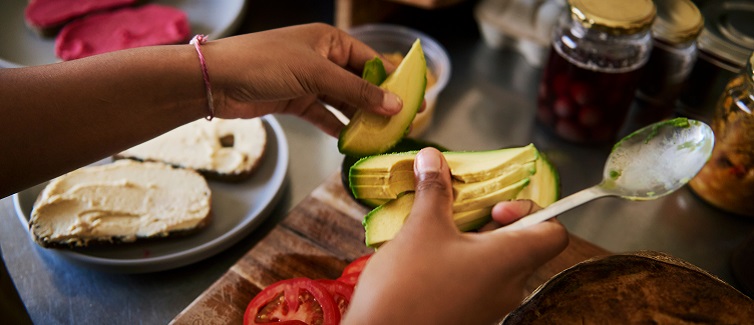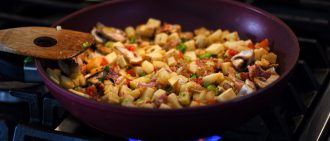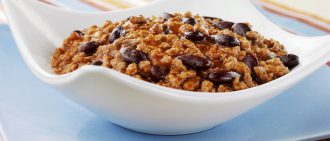A healthy diet can make a big difference in lowering your risk for heart disease. Healthy meals and snacks can prevent heart disease and its complications, according to the Centers for Disease Control and Prevention (CDC).
Diet advice is everywhere, but do you know how to pick foods that are heart-healthy?
The best food choices help control your risk factors, like your weight, cholesterol, blood pressure, and blood glucose level. Not sure where to begin? Find out now.
The Basics for Heart-Healthy Eating
A heart-healthy eating plan includes fresh, whole foods that are:
- Lower in fat.
- Lower in cholesterol.
- Lower in sodium.
- Higher in fiber.
Heart-Healthy Recipes
Heart-Healthy Fruits & Vegetables
Fruits and vegetables are good sources of vitamins, minerals, fiber, and antioxidants. They are often lower in calories and fat and are cholesterol-free.
The American Heart Association (AHA) recommends four to five servings of both fruit and vegetables per day.
Fresh, frozen, and canned fruits and vegetables all can have health benefits, the AHA says. When choosing canned or frozen options, watch out for the amount of sodium and added sugar. Choose options without added salt, sugar, and fat.
Eat a variety of colorful fruits and vegetables each day.
Whole Grains
Eating whole grains as part of a healthy diet may lower your risk of heart disease, the AHA says. Whole grains contain fiber, B vitamins, and minerals.
The AHA recommends products that are at least 51% whole grains compared to refined grains. Always read food labels, and make sure the first ingredient is a whole grain.
Never Miss a Beat!
Subscribe to Our HealthBeat Newsletter!
Thank you for subscribing!
You can now select the specific newsletters you'd like to receive.
You are already subscribed.
Subscribe to more newsletters in our email preference center.
Sorry, an error occurred. Please try again later.
Get Healthy Tips Sent to Your Phone!
Beans and Legumes
Beans and legumes are good sources of protein, minerals, and fiber. Soluble fiber can help lower cholesterol, which in turn can lower your risk of heart disease.
As an added benefit, beans and legumes don’t contain the saturated fats found in animal proteins.
Beans come in many shapes and sizes, so add them to your soups, salads, and other dishes for a heart-healthy kick. If you’re using canned beans, the AHA recommends draining and rinsing them to wash off excess salt. You also can look for low-sodium options at the store.
Lean Beef or Pork, Poultry, & Fish
When eating meat, it’s best to go lean.
Red meat (like beef, pork, and lamb) generally has higher amounts of saturated fats compared to skinless chicken, fish, and plant protein, the AHA says. Saturated fats can raise your cholesterol and your risk of heart disease.
Meat is a good source of protein, vitamins, and minerals. Fish and poultry without skin are heart-healthy protein choices. Go for fish with omega-3 fatty acids, like salmon, trout, and herring. These acids can lower your risk of heart failure, coronary artery disease, heart attack, and ischemic stroke.
When shopping, the AHA recommends looking for meat with the lowest amount of fat visible. Cuts with the words “round,” “sirloin,” and “loin” are generally leaner. Pick leaner ground beef, with 15% or less fat content.
When preparing meat, bake, broil, or grill it — don’t fry it. Fried foods are linked to a higher risk of heart disease. Keep your portion size in mind, too: A 3-ounce portion of meat equals one serving.
Also, remember that plant-based proteins —beans, chickpeas, lentils, nuts, potatoes, tofu, and more — carry plenty of heart benefits without the saturated fats found in animal proteins.
Dairy
Low-fat or fat-free dairy products without added sugar are heart-healthy choices. These are good sources of potassium, which may help with blood pressure control. They also are rich in calcium, vitamin D, and protein.
Choose low-fat, fat-free, and 1% milk, yogurt, and cheese. Those are healthier options than 2% or whole milk.
Fats & Oils
Not all fats and oils are the same, and it’s important to know the good from the bad.
‘Good’ fats
- Liquid vegetable oils like avocado, canola, olive, peanut, safflower, sesame, sunflower, and more.
- Avocados.
- Nuts and seeds.
Healthy fats can help lower LDL (“bad”) cholesterol and help to lower your risk of heart disease and stroke.
Nuts and seeds are easy on-the-go snacks and a good source of protein, fiber, vitamins, minerals, and antioxidants. Remember, nuts are also high in calories, so keep an eye on your serving size.
‘Bad’ fats
Saturated fats, which should be limited in your diet, come from animal products and tropical oils. Examples include:
- Fatty cuts of meat, poultry skin, and butter.
- Whole or 2% milk, cream, and cheese.
- Coconut, cottonseed, palm, palm kernel, and partially hydrogenated oils.
Hydrogenated fats contain trans fats, which should be avoided.
Always check labels for the type and amount of fat in foods.
The UPMC Heart and Vascular Institute is a world leader in cardiovascular care. For more on the services we provide in your community, visit our website.
Editor's Note: This article was originally published on , and was last reviewed on .
About Heart and Vascular Institute
The UPMC Heart and Vascular Institute has long been a leader in cardiovascular care, with a rich history in clinical research and innovation. As one of the first heart transplant centers in the country and as the developer of one of the first heart-assist devices, UPMC has contributed to advancing the field of cardiovascular medicine. We strive to provide the most advanced, cutting-edge care for our patients, treating both common and complex conditions. We also offer services that seek to improve the health of our communities, including heart screenings, free clinics, and heart health education. Find an expert near you.







